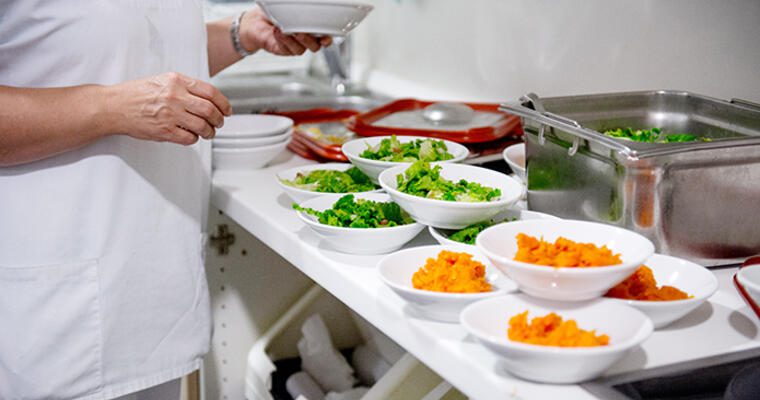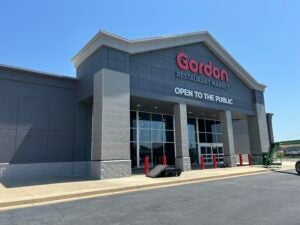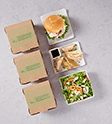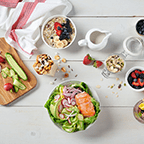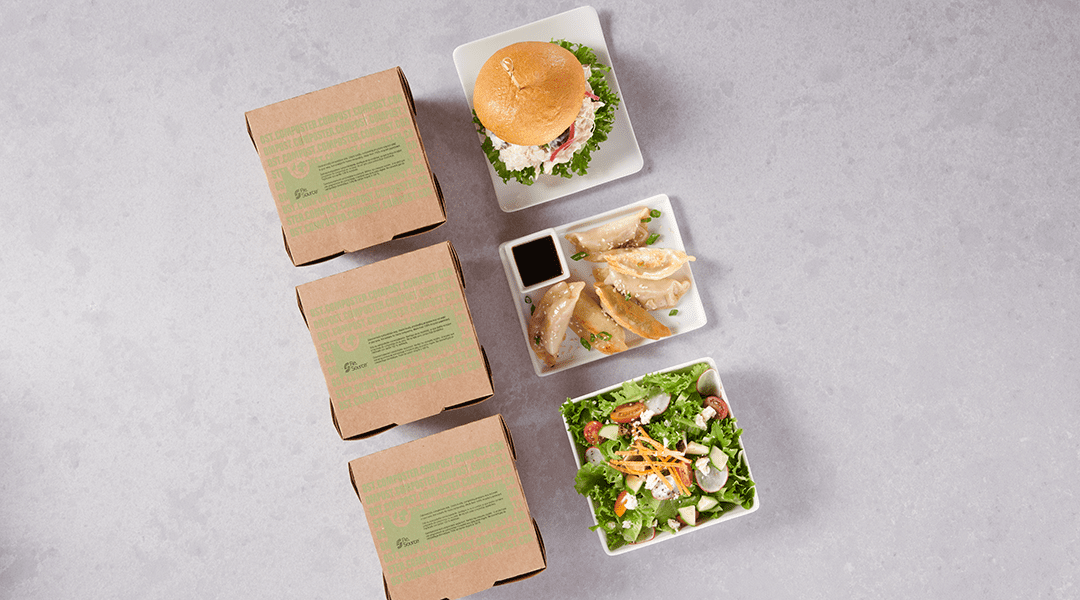You can’t manage what you don’t measure. It’s hard to imagine those seven words are the solution for calming the difficult-to-navigate waters of running a school foodservice program, but it’s true. In fact, when it comes to tracking, measuring and controlling everything, one word sums it up nicely: benchmarking.
Benchmarking is simply a self-improvement process—tracking data to measure the details of your program, whether it’s USDA food allotment spending, order placing, menu creation, kitchen production, staff management, etc. And now that the school year is in session, it’s the perfect time to use data you’ve collected to take a look at such things as food cost per meal, labor cost per meal, non-food cost per meal, meal count per labor hour and even lining up your food allotment spending so you don’t leave money on the table. Ben Gardner, Gordon Food Service Customer Intelligence and Strategy Analyst, says POS systems are equipped to provide comparisons weekly, monthly, quarterly or annually, any of which can help improve efficiency.
“I’ve spoken with operators who have integrated end-to-end data analysis and activity reports,” Gardner says. “Throughout the year they are using production information to make their operation as efficient as possible by identifying strengths and weaknesses and making changes where necessary.”
Start with a baseline
There’s no limit to the data you can examine, but you first need to know what you’re paying for, says Julie Hedine, Director of Food and Nutrition Services at Pasco County Schools north of Tampa, Florida. When it comes to allotment spending, some costs are easier to track than others.
Invoices monitor orders and purchasing. The POS system collects information about how, where and when food is sold. The general budget can tell you labor costs and equipment costs. Hedine says all of these numbers are essential to establish a baseline. Once you do that, the comparisons become more manageable.
For Hedine, who oversees foodservice for a 70,000-student district and a budget approaching $39 million, her baseline is a “common meal equivalent cost.” It’s based on how much it costs to serve lunch, the most popular meal served (43,000 daily). She factors in all costs—food, storage, preparation, materials, labor, cleanup—to determine how much the average lunch costs, and then she is able to make apples to apples comparisons.
“You can compare school-to-school—if one school’s costs seem high, we examine whether it’s waste, overserving, portion sizes, are they following paper supply standards or do they have a theft problem,” she says. “We may also have higher labor costs at one school because of higher-wage workers or absenteeism.”
Look for trends
Other factors also affect common meal equivalent cost numbers. Some are revealed by looking at processes, and others are trend-based. Scratch-made food can have less food cost but more labor cost. The number of serving and payment lines affects cafeteria traffic flow and purchasing habits. None of these things can be made more efficient, Hedine says, unless you benchmark.
Looking for efficiencies requires the ability to compare. If a school district is big enough, it’s possible to compare similar-sized schools. But districts of any size are able to make weekly, monthly, quarterly or annual comparisons.
“There’s never a bad time to start,” Hedine says. “Once you get a few weeks or months of data you have something to compare.”
Once the data rolls in, it’s possible to compare costs and revenue. But even these don’t tell the whole story. Something else Hedine watches for are trends.
“The numbers at the beginning of the year are typically lower, and that’s because a lot of kids bring sack lunches,” she says. “About a month into the year, this gets a little tiresome, so we use benchmarking and trend findings to adjust our forecasting all the time.”
Monitor your spending through forecasting
What you’re counting on benchmarking to do is build a framework that guides short-term and long-term decision making directed toward financial health. Forecasting can be a big help when managing your allotment spending.
“You have to shift from the start of the school year to placing orders for USDA food allotments in January pretty quickly,” Hedine says. “By October, you should already have some benchmarking data available to help you spend your USDA allotment wisely.”
For example, Hedine says she knows her kitchens are capable of making mac ‘n cheese, but the data has shown that it’s more cost effective from a labor standpoint to buy a ready-made product. Plus, students know what’s on the menu has a consistent flavor and texture, which keeps sales numbers up. And that’s how data helps with forecasting.
Cycle menus, such as the four-week cycle menu used at Pasco County, also help with forecasting and food costs because the district knows exactly what it’s going to serve and when.
Maureen Pisanick, President and Chief Nutrition Officer at Pisanick Partners, points out that cycle menus help forecasting in a number of ways. Because you can plan the menu weeks in advance, you have food-buying cost controls. You also know how much staffing it takes to prepare the meals.
“As you repeat the cycle, you should have a good indicator of student food preferences, which can reduce waste and reveal where menu changes need to be made,” Pisanick says.
In addition to using cycle menus, Pasco County also rings up every menu item sold as students check out. “If a student comes through with a chicken sandwich, roasted broccoli, a piece of fruit and milk, we punch four buttons so we know how much of each item we sold,” Hedine says. “This gives accurate numbers to our suppliers.”
Let data help manage the bigger picture
All the information a foodservice director collects can then be used in meetings with the district business manager. Whether those meetings are weekly, monthly or at some other interval, data can help find efficiencies.
At Pasco County, Hedine’s finance manager has weekly business process meetings with the budgeting team, and Hedine meets monthly with the district’s chief financial officer. Whether she needs to discuss the lunch program, adult meals, vending, or federal and state requirements, knowing details can move the needle toward smarter spending.
She says three of the most important things she monitors are food costs, labor costs and operating revenue. When you have numbers from all three, you can make little decisions that make a big difference, such as determining whether buying chopped lettuce is a better deal than the labor and safety involved in chopping it yourself.
“I couldn’t go into a meeting and make a request without data to back me up,” she says. “We’re very data driven, and it makes a huge difference.”
